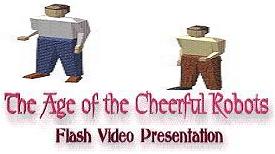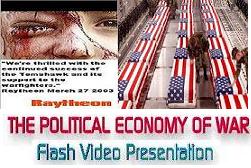

We are often told that slavery is a thing of the past. However, the current world situation reveals that slavery still exists and its strongest and most vocal proponents are the U.S. power elite. Modern American society and by extension the World System is three tiered: 1. Those at the very top, the elite (a microscopic minority) 2. Those at the very bottom, the excluded class, and 3. The disorganized middle, wherein is rapidly emerging a standardized “mass society”.
As we study the world situation, we are reminded of Malcolm X’s statement regarding two types of slaves, during the (chattel) slavery era in America: the House slaves and the Field slaves. The House slaves were often treated better than the Field Slaves; they looked after the master’s house, often got better food and clothing, and as a result came to a somewhat happy acceptance of their condition. There was no total acceptance but there wasn’t any complete rejection either. They considered themselves to be privileged and of a higher status than the Field slaves, whose status and living conditions were inferior to their own. When the Field slaves wanted to escape the master’s oppression, and sought help from the House slaves, that help seldom came. When the master, who rarely did his own fighting, wanted to bring the rebelling Field slaves back in line, he often mobilized the House slaves.
Looking at the situation within the U.S, as well as around the world, we note that the U.S. elite are the current day masters, whose brutality is no less than the masters of old: the scale of that brutality (real and potential) has massively increased due to technological advancement, even as oppression is made impersonal and business-like (Mills 1960:88, Causes of World War III). Having total control over material resources, they have “created” the material world after their own image (the objective world). They also manage the dissemination of culture, being in command of the cultural apparatus (the mass media and formal education): language, technology and status (thereby influencing people’s subjective world). Over time, elite generated “reality” assumes an existence of its own and becomes “sui generis”, in the form of “social facts”: it cannot be questioned, it exists on its own, separate from individuals.
Those in the middle, the “mass society”, are conditioned to happy acceptance of this “created” world; they are the House slaves of today, what C. Wright Mills described as the “Cheerful Robots”: the guards that are mobilized at the master’s bidding. Conditioned by a bureaucratic society, with its strict rules of rewards and punishment, they have adapted and become standardized, like a uniform product off a conveyor belt (http://robots.asadi.org). This leaves them with limited capacity to transcend their society, and an inability to view the machinery that is pulling their “strings”.
At the very bottom lies the excluded class (today’s brutalized Field slaves). The oppression and lack of opportunity they face, coupled with segregation and rejection by the mainstream, has created a powder keg situation, waiting to explode. The elite recognize this, so they mobilize the guards, the House slaves to pacify them. In this context we can understand police brutality in the inner cities of the U.S. and an extremely high rate of incarceration (over a third of young African American males have been involved in the US criminal justice system). Internationally, the Iraq war is an example of the same phenomenon. For those who are not authoritatively controlled, control is achieved though more (implicit) structural means: the cultural manifestation of the “cycle of poverty” (and structural control through domination of markets and global finance on the international level):
“The accumulation of advantages at the very top parallels the vicious cycle of poverty at the very bottom. For the cycle of advantages includes psychological readiness as well as objective opportunities: just as the limitations of lower class and status positions produce a lack of interest and self-confidence…Energetic aspiration lives off a series of successes; and continual petty failure cuts the nerve of the will to succeed.”
"Just as on the one hand, we have become slaves of the production process, so, on the other, we have become slaves of the products. That is...by means of technology (is offered to us) mastery over the self reliance and spiritual center of life through endless habits, endless distractions and endless superficial needs. Thus, the domination of the means has taken possession not only of specific ends but of the very center of ends...Man has thereby become estranged from himself; an insuperable barrier of media, technical inventions, abilities and enjoyments has been erected between him and his most distinctive and essential being. There has never been an age in which such an emphasis on the intermediate aspects of life, in contrast to its central and definite purposes was totally alien to that age. " (Georg Simmel, The Philosophy of Money. 1900 (1990:484 English translation))
"(The Code of the Street) is nothing less than the cultural manifestation of persistent urban poverty. It is a mean adaptation to blocked opportunities and profound lack, a grotesque form of coping by young people constantly undermined by a social system that historically has limited their social options and until recently rejected their claims to full citizenship." (Elijah Anderson, Code of the Street 1999:146-147).
The world's 500 richest people, according to UN statistics (UN Human Development Report) have as much income as the world's poorest 416 million people (Reuters Oct 5, 2005), and assets greater than 2.3 billion people (UN Human Development Report 1996). According to the UN, around 50% of the world's population lives on less than $2 a day. Among them, many live on less than $1 a day: According to the United Nations' Least Developed countries (LDC) report (2002 & 2004),during 1995-1999, 81% of the populations in the LDCs lived on less than $2 a day. When adjusted by purchasing par parity (PPP), it comes to an average consumption of $1.03 a day (1985 PPP).
Of the African LDCs, 87 percent of the population was living on less than $2 a day, with an average consumption of 86 cents a day ($0.86). From 1965 to 1969, 48 percent of the people in the LDCs were living on less than $1 a day, now its almost 50 percent. Taking into account the population increase from the 1960s, that comes to more than twice the number of people living at less than $1 a day now than did back then (138 million then, 307 million now). The average per capita income of the LDCs, in the late 1990s measured in terms of current prices and exchange rates comes to $0.72 a day (72 cents).
According to the Federal Reserve
Slavery never ended, it merely changed forms, became bureaucratized, (thereby enslaving a greater percentage of humanity than ever before), and the power of the masters became ultra-concentrated. However, the political economy of slavery is always tenuous and uneasy, it contains built-in antagonisms. Every day a few individuals recognize their condition of bondage, the fact that they live in a world they did not make and they realize that their actions and words have no real consequence for the structure of their society, regardless of the official platitudes. They come to understand and recognize the causes of their alienation, causes that were previously masked by the “opium” of mass consumption. They come to recognize the meaningless and narrow natures of their lives; the purpose of which, they were told through incessant media messages, was to maintain consumption at a maximal level. They now attain a position, a vantage point from which they can view directly the “puppet masters” that control their movements and determine their life-chances. Such personality types increase in number when material circumstances become acute, due to the ever-increasing flow of wealth towards the very top, inherent in the capitalistic mode of production. Discovering how to stimulate the rise of such personality types is the key to emancipating humanity. Those best suited to discover this key are the intellectuals; will they rise to the occasion or become obscure as technicians in a bureaucratized social system?






